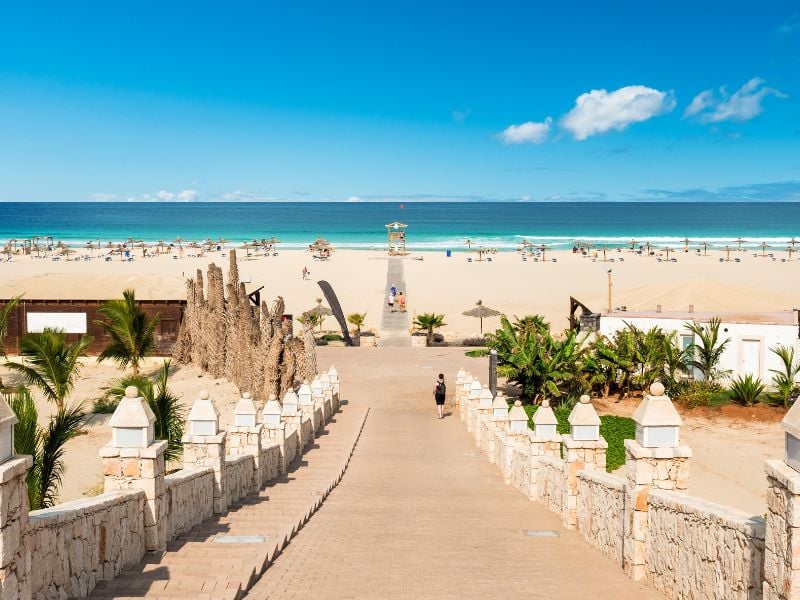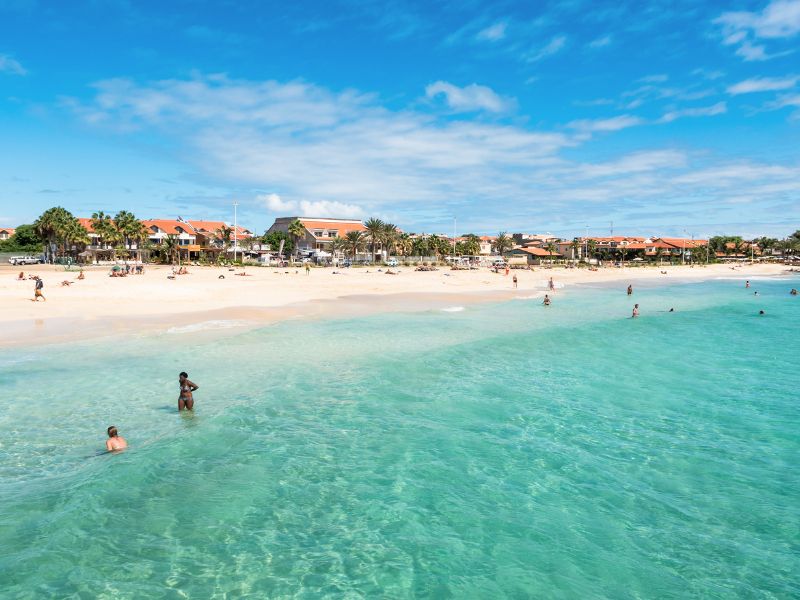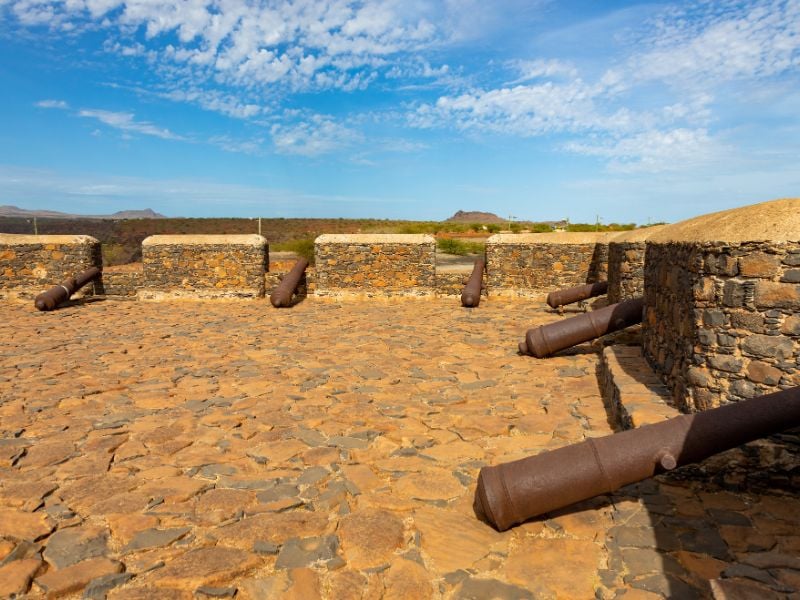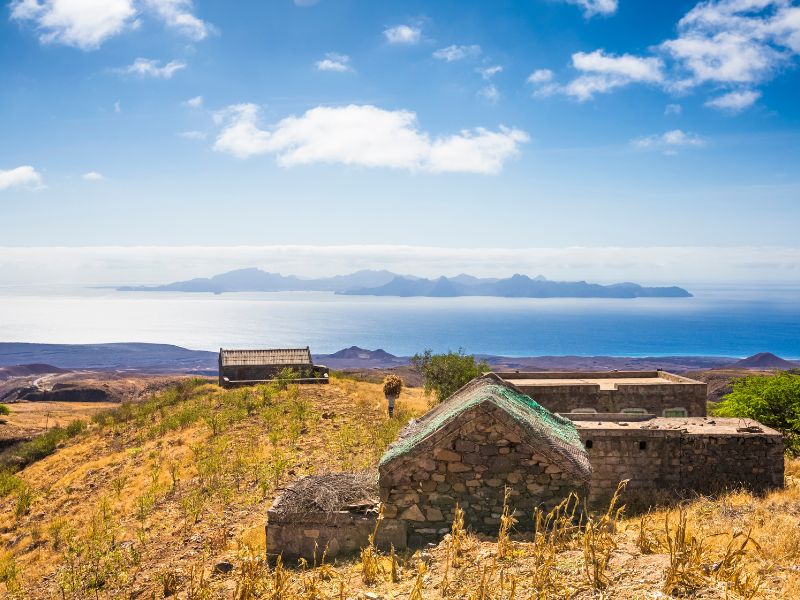Cape Verde offers a stack of activities for every type of traveler. From exploring the vibrant capital city of Praia and relaxing on the stunning beaches of Sal, to discovering the historic Cidade Velha and hiking through the scenic valleys of Santo Antão, there is something for all.
Experience the vibrant music scene in Mindelo, visit the natural wonders of Fogo Island, and explore the crystal-clear waters of São Vicente. Enjoy Cape Verdean culture and indulge in delicious cuisine.
Good To Know
- Explore the diversity of Cape Verdean culture through local markets and cultural festivals
- Relax and enjoy the beautiful beaches of Sal, engaging in water sports activities
- Discover the historical significance of Cidade Velha through its fortresses, churches, and colonial mansion
- Experience the breathtaking landscapes and local culture of Santo Antão through hiking and visiting charming villages
Explore the Vibrant Capital City of Praia

As visitors explore the vibrant capital city of Praia, they can discover a variety of cultural and historical landmarks. One of the must-do activities in Praia is to explore the local markets. These bustling marketplaces offer a glimpse into the daily lives of the locals and showcase the rich diversity of Cape Verdean culture. Visitors can wander through the stalls filled with fresh produce, locally made crafts, and traditional clothing. The markets are also a great place to sample delicious local cuisine, such as fresh seafood and tropical fruits.
Along With the markets, Praia is known for its vibrant cultural festivals. Throughout the year, the city comes alive with music, dance, and celebrations that highlight the unique traditions of Cape Verde. From the lively Batuko dance festival to the colorful Carnival parade, there’s always something exciting happening in Praia. These festivals provide a wonderful opportunity for visitors to enjoy the local culture and experience the joy and energy of Cape Verdean traditions.
Whether exploring the markets or attending a cultural festival, visitors to Praia are sure to have an unforgettable experience.
Relax on the Stunning Beaches of Sal

Visitors can unwind and soak up the sun on the stunning beaches of Sal. This beautiful island offers a wide range of stunning beach resorts where travelers can relax and enjoy the breathtaking views of the crystal-clear waters.
The white sandy beaches are perfect for long walks or simply lounging under the shade of a palm tree. For those looking for more adventure, Sal is also known for its exciting water sports activities. From surfing and windsurfing to snorkeling and scuba diving, there are plenty of opportunities to explore the underwater world and experience the thrill of gliding across the waves.
Whether you prefer to relax on the beach or engage in thrilling water sports, Sal’s beaches offer something for all.
Discover the Historic Cidade Velha

The historic Cidade Velha offers visitors a glimpse into the unique cultural heritage of Cape Verde. This UNESCO World Heritage site holds great historical significance and is a must-visit destination for history enthusiasts.
Here are four reasons why you should explore the architectural wonders of Cidade Velha:
- Fortaleza Real de São Filipe: This 16th-century fortress stands as a testament to the island’s colonial past and offers panoramic views of the surrounding area.
- Nossa Senhora do Rosário Church: Built in the 15th century, this church showcases beautiful Portuguese architectural influences and houses religious artifacts of great cultural importance.
- Pelourinho: This stone pillar served as a symbol of authority during colonial times and is an important historical landmark in the town square.
- Royal Pombaline House: Explore this well-preserved colonial mansion and get a glimpse into the lives of the wealthy during the Portuguese era.
Enjoy the historical significance and architectural wonders of Cidade Velha for a truly enriching experience in Cape Verde.
Hike Through the Scenic Valleys of Santo Antão

Many travelers enjoy exploring and hiking through the scenic valleys of Santo Antão. The island of Santo Antão, part of the Cape Verde archipelago, is known for its breathtaking landscapes and diverse hiking trails. One of the most popular activities for visitors is to Set out on a hike through the stunning valleys that dot the island.
These scenic trails take you through lush greenery, towering cliffs, and picturesque villages. Along the way, hikers can enjoy the local culture by visiting the charming local villages that are scattered throughout the valleys. These villages offer a glimpse into the traditional way of life on the island, with their colorful houses, friendly locals, and vibrant markets.
Hiking through the scenic valleys of Santo Antão is a truly memorable experience for nature lovers and adventure enthusiasts alike.
Experience the Vibrant Music Scene in Mindelo
When exploring Cape Varde, visitors can experience the vibrant music scene in Mindelo. This city is known as the cultural capital of Cape Verde and is a hub for music lovers. Here are four reasons why music enthusiasts shouldn’t miss out on Mindelo:
- Vibrant music festivals: Mindelo is home to several music festivals throughout the year, where local and international artists come together to showcase their talents. These festivals celebrate various genres, including morna, coladeira, and funaná.
- Local music traditions: Mindelo is deeply rooted in Cape Verdean music traditions. you can enjoy the unique cultural heritage by attending live performances and witnessing traditional dances.
- Lively music venues: Mindelo boasts numerous music venues where you can enjoy live performances by talented musicians. From intimate bars to larger concert halls, there’s something for all.
- Music workshops: For those interested in learning more about Cape Verdean music, Mindelo offers music workshops where visitors can gain insight into the local music scene and even try their hand at playing traditional instruments.
In Mindelo, music is more than just entertainment – it’s a way of life.
Go Whale Watching in Boa Vista
Visitors to Boa Vista can enjoy whale watching, spotting these majestic creatures in their natural habitat. Boa Vista, one of the Cape Verde islands, is a prime location for whale watching due to its position in the Atlantic Ocean. The island is renowned for its diverse marine life, including humpback whales, sperm whales, and even the occasional sighting of the elusive blue whale. To fully appreciate these magnificent creatures, travelers can take a boat tour, guided by experienced professionals who provide fascinating insights into the behavior and biology of the whales. For those seeking a more immersive experience, they can also go snorkeling in Boa Vista’s crystal-clear waters, allowing them to witness the underwater world and possibly catch a glimpse of these incredible creatures up close.
| Activity | Location |
|---|---|
| Whale Watching | Boa Vista |
| Snorkeling in Boa Vista | Crystal-clear waters |
| Boat Tour in Boa Vista | Atlantic Ocean |
Visit the Natural Wonders of Fogo Island
To fully enjoy the natural beauty of Fogo Island, travelers can hike through its volcanic landscapes and explore its picturesque coastal cliffs. Fogo Island, located in Cape Verde, is home to a variety of natural wonders that are sure to captivate visitors. Here are four must-see attractions on the island:
- Hiking Trails: Fogo Island offers a range of hiking trails that allow visitors to explore its diverse terrain. From challenging treks up the Pico do Fogo volcano to leisurely walks along the coastline, there’s a trail for every level of hiker.
- Volcano Exploration: The highlight of Fogo Island is undoubtedly the Pico do Fogo volcano. This active volcano offers a unique opportunity for visitors to witness the raw power of nature up close.
- Coastal Cliffs: The island’s coastline is adorned with breathtaking cliffs that offer stunning views of the Atlantic Ocean. Visitors can take a leisurely stroll along the cliffs and soak in the beauty of the surroundings.
- Natural Pools: Fogo Island is also known for its natural pools, formed by volcanic rocks. These pools offer a peaceful and refreshing escape from the heat, where visitors can swim and relax in the crystal-clear waters.
Whether you’re a nature enthusiast or simply looking for a unique adventure, Fogo Island’s natural wonders are sure to leave a lasting impression.
explore the Crystal-Clear Waters of São Vicente
Located off the coast of Cape Verde, São Vicente offers a perfect opportunity for visitors to explore the crystal-clear waters and explore the vibrant marine life. With its abundance of water sports activities and diverse marine ecosystem, São Vicente is a haven for those seeking adventure and underwater exploration.
Visitors can engage in a variety of water sports such as snorkeling, scuba diving, and kayaking, allowing them to enjoy the stunning underwater world. The waters surrounding São Vicente are teeming with marine life, including colorful coral reefs, tropical fish, and even the occasional sighting of dolphins and turtles.
To make the most of their marine life exploration, visitors can join guided tours led by experienced instructors who can provide valuable insights and ensure their safety. These tours can take visitors to popular dive sites such as the Baía das Gatas or the Calhau Shipwreck, where they can witness the diverse marine ecosystem up close.
São Vicente’s crystal-clear waters and vibrant marine life make it an ideal destination for water sports enthusiasts and nature lovers alike. Whether you are a beginner or an experienced diver, exploring the underwater world of São Vicente is an unforgettable experience. So, grab your gear and dive in!
| Water Sports | Marine Life Exploration |
|---|---|
| Snorkeling | Colorful coral reefs |
| Scuba diving | Tropical fish |
| Kayaking | Dolphins |
| Turtles | |
| Shipwrecks |
Learn About Cape Verdean Culture at the Ethnographic Museum of Cape Verde
The Ethnographic Museum of Cape Verde offers visitors a fascinating insight into Cape Verdean culture. Here are four reasons why a visit to this museum is a must:
- Cape Verdean traditional crafts: At the museum, you can explore a wide range of traditional crafts, including pottery, basketry, and weaving. Learn about the techniques used to create these beautiful and unique pieces.
- Traditional dances: Enjoy the vibrant and rhythmic world of Cape Verdean dance. The museum showcases various traditional dances, such as the funaná, morna, and coladeira. Watch performances or even join in and learn a few steps yourself.
- Music: Cape Verdean music is known for its soulful melodies and heartfelt lyrics. The museum provides a platform to learn about different musical styles, such as batuque, tabanka, and funaná. Listen to recordings or attend live performances to truly appreciate the richness of Cape Verdean music.
- Cultural heritage: Gain a deeper understanding of Cape Verdean history and heritage through the museum’s exhibits and displays. Learn about the influences of African, Portuguese, and Brazilian cultures on the archipelago and how they’ve shaped the unique identity of Cape Verde.
Enjoy Delicious Cape Verdean Cuisine
Visitors can satisfy their taste buds and experience the flavors of Cape Verdean cuisine by dining at the local restaurants and food stalls. Cape Verdean culinary delights offer a unique blend of African, Portuguese, and Brazilian influences, resulting in a diverse and exciting food culture.
Traditional food in Cape Verde is characterized by its use of fresh seafood, tropical fruits, and local spices. One must-try dish is Cachupa, a hearty stew made with corn, beans, and various meats or fish. Another popular dish is Pastel com Diabo dentro, a deep-fried pastry filled with spiced meat. For those with a sweet tooth, the traditional dessert Queijada is a must-try, made with cheese, eggs, and sugar.
With its rich and flavorful cuisine, Cape Verde offers a truly memorable dining experience for visitors.
Common Questions
How Much Does It Cost to Go Whale Watching in Boa Vista?
Whale watching in Boa Vista is a popular activity. The cost of transportation to Boa Vista varies depending on the location. The best time to go is during the peak whale watching season, which is typically from February to April.
Are There Any Cultural Events Held in Mindelo?
There are several cultural festivals in Mindelo, Cape Verde. This vibrant city hosts events like the Baía das Gatas Music Festival and the Mindelact Theater Festival, showcasing traditional music and performances.
What Are the Popular Dishes in Cape Verdean Cuisine?
Popular dishes in Cape Verdean cuisine include cachupa, a hearty stew made with corn, beans, and local ingredients such as meat or fish. Traditional recipes often feature seafood, like grilled lobster and tuna.
Is Cidade Velha a UNESCO World Heritage Site?
Yes, Cidade Velha in Cape Verde is a UNESCO World Heritage site. The historic town has undergone restoration efforts and conservation initiatives to preserve its cultural and historical significance.
Are There Any Specific Hiking Trails Recommended in Santo Antão?
There are several recommended hiking trails in Santo Antão that offer breathtaking views. Explore the island’s diverse landscapes, from lush valleys to rugged mountains, and discover the best viewpoints along the way.
The Sum Up
To sum it up, Cape Verde offers a wealth of activities and attractions for visitors to enjoy.
From exploring the vibrant capital city of Praia to relaxing on the stunning beaches of Sal, there’s something for all.
Whether you’re interested in history, nature, or culture, Cape Verde has it all.
Don’t forget to indulge in the delicious Cape Verdean cuisine and Enjoy the vibrant music scene.
With its beautiful landscapes and warm hospitality, Cape Verde is a destination worth exploring.
